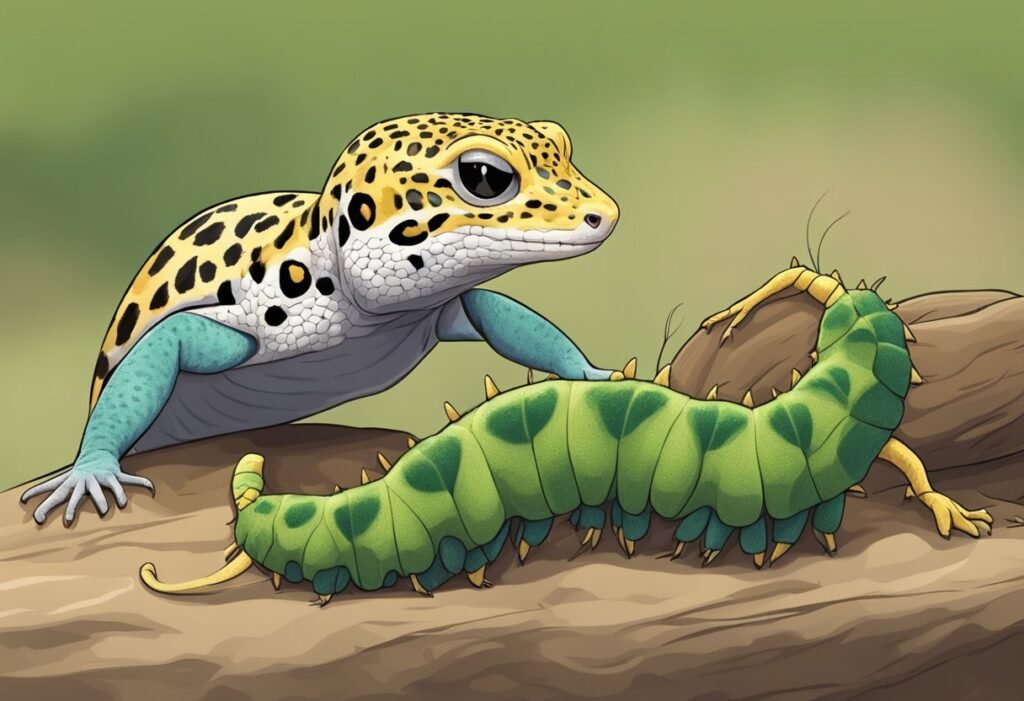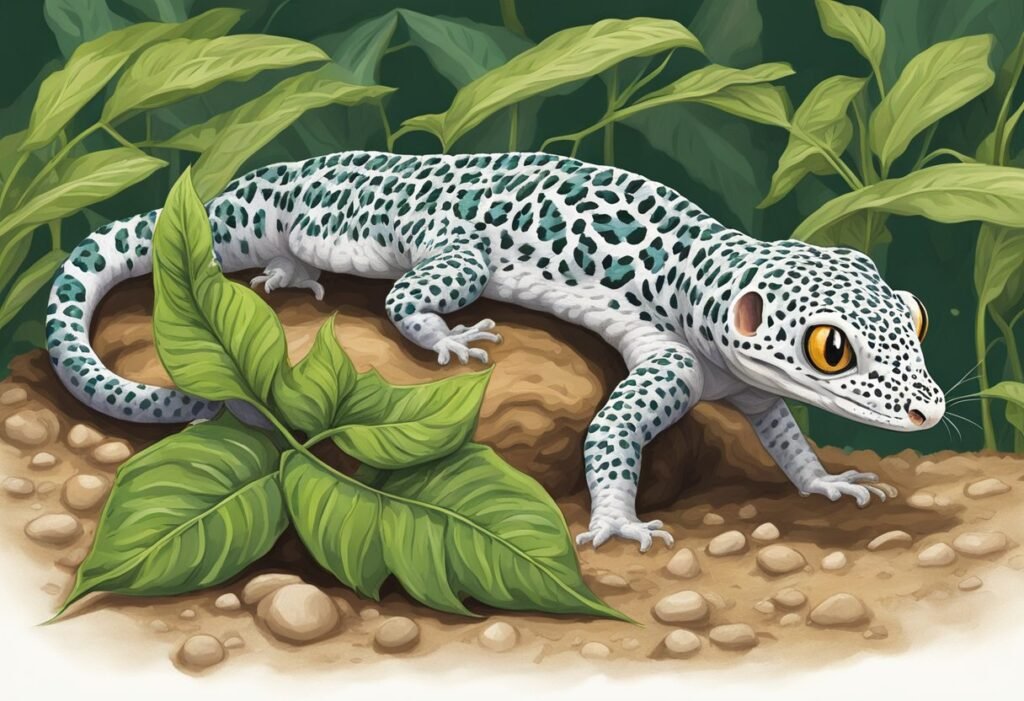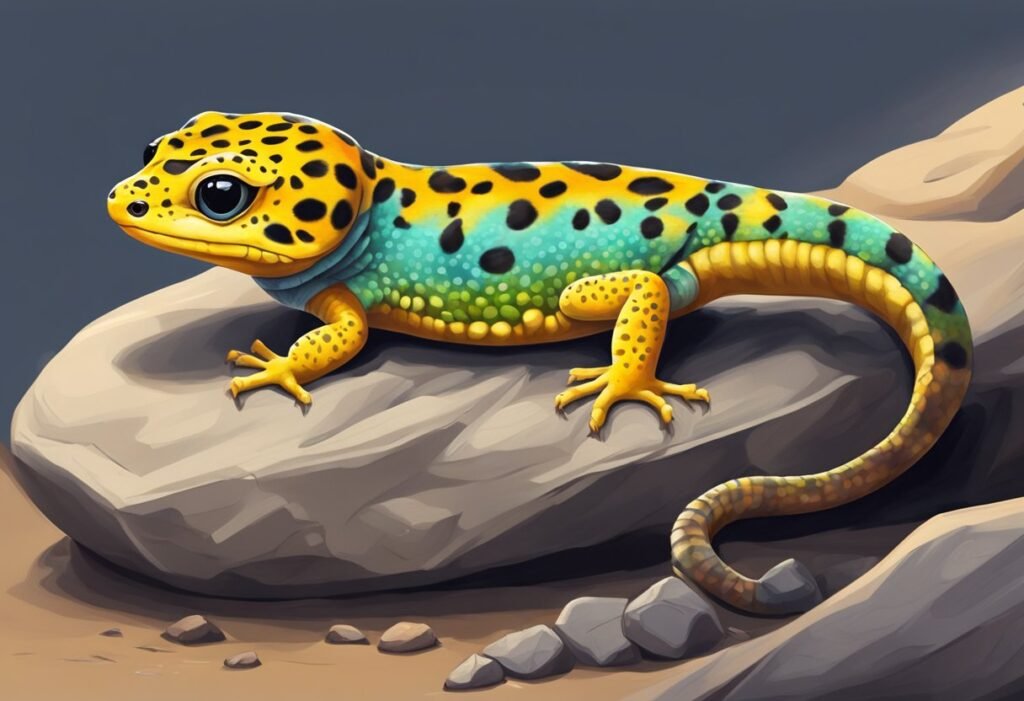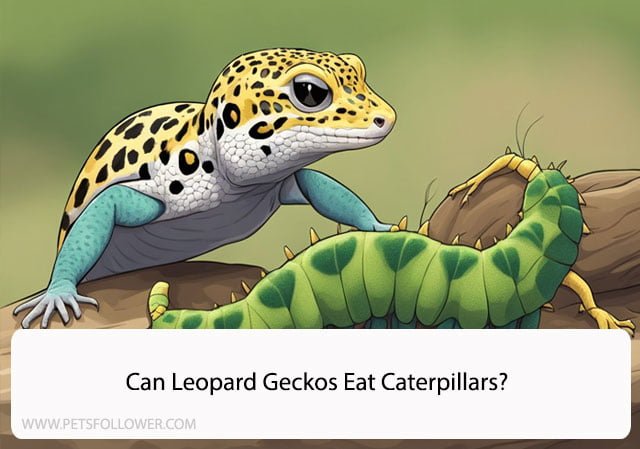Leopard geckos are fascinating creatures that are easy to care for, making them a popular choice among reptile enthusiasts. As with any pet, it is important to provide them with a balanced and nutritious diet. One question that often arises is whether leopard geckos can eat caterpillars. In this article, we will explore this topic and provide you with the information you need to make an informed decision about feeding caterpillars to your leopard gecko.
Leopard geckos are insectivores, which means that their diet consists primarily of insects. They require a variety of insects to ensure that they receive all the necessary nutrients. While mealworms and crickets are the most commonly fed insects, many leopard gecko owners wonder if caterpillars can also be included in their pet’s diet. This is a valid question, as caterpillars are a common prey item for many reptiles in the wild. However, not all caterpillars are safe for leopard geckos to eat, and it is important to know which ones are safe and which ones to avoid.
Leopard Gecko Dietary Basics

Leopard geckos are insectivores, which means they require a diet of live insects to survive. In the wild, they eat a variety of insects such as crickets, mealworms, and waxworms. In captivity, it is important to provide them with a balanced diet to ensure they receive all the necessary nutrients.
Nutritional Needs
Leopard geckos require a diet that is high in protein and low in fat. They also need calcium and vitamin D3 to maintain healthy bones. It is important to provide them with a variety of insects to ensure they receive all the necessary nutrients.
Here is a table of the nutritional content of some common feeder insects:
| Insect | Protein | Fat | Calcium |
|---|---|---|---|
| Crickets | 21% | 6% | 75mg/100g |
| Mealworms | 20% | 13% | 10mg/100g |
| Waxworms | 15% | 25% | 20mg/100g |
Feeding Frequency
Leopard geckos should be fed every 2-3 days. It is important not to overfeed them as this can lead to obesity and other health problems. A good rule of thumb is to feed them as many insects as they can eat in 10-15 minutes.
In conclusion, providing a balanced diet is essential for the health and well-being of leopard geckos. By meeting their nutritional needs and feeding them the appropriate amount, they can live a long and healthy life.
Caterpillars as Food

Caterpillars are a common food source for many reptiles, including leopard geckos. While they can provide some nutritional benefits, it is important to consider the potential risks associated with feeding caterpillars to your leopard gecko.
Nutritional Value
Caterpillars are a good source of protein and can be a nutritious addition to a leopard gecko’s diet. They also contain vitamins and minerals that are important for maintaining good health.
However, it is important to note that not all caterpillars are created equal. Some species of caterpillars may contain toxins that can be harmful to your leopard gecko. It is important to do your research and only feed your leopard gecko caterpillars that are safe for consumption.
Potential Risks
As mentioned earlier, some species of caterpillars can be toxic to leopard geckos. These toxins can cause a range of symptoms, including vomiting, diarrhea, and even death in severe cases.
In addition to the potential for toxicity, feeding your leopard gecko a diet that is too high in protein can also be harmful. This can lead to a condition called gout, which can cause joint pain and other health problems.
Overall, while caterpillars can provide some nutritional benefits, it is important to exercise caution when feeding them to your leopard gecko. Always do your research and make sure that the caterpillars you are feeding are safe and appropriate for your pet’s diet.
Safe Feeding Practices
When feeding leopard geckos caterpillars, it is important to follow safe feeding practices to ensure the health and well-being of your pet. Here are some guidelines to follow:
Preparing Caterpillars
Before feeding caterpillars to your leopard gecko, make sure they are safe to eat. Some species of caterpillars are toxic and should not be fed to your pet. It is important to research the species of caterpillar you plan to feed to ensure it is safe.
When preparing caterpillars, it is important to remove any hard or sharp parts, such as spines or hairs, as these can cause harm to your gecko’s digestive system. You can do this by gently brushing the caterpillar with a soft-bristled brush or by removing the spines with tweezers.
Portion Control
Feeding your leopard gecko an appropriate portion size is important to prevent overfeeding and obesity. As a general rule, feed your gecko a portion size that is no larger than the width of its head. This will help prevent digestive issues and ensure your gecko maintains a healthy weight.
It is also important to monitor your gecko’s eating habits and adjust portion sizes accordingly. If your gecko is consistently leaving food uneaten, you may be feeding too much. On the other hand, if your gecko is consistently hungry and begging for food, you may need to increase portion sizes.
By following safe feeding practices, you can ensure that your leopard gecko is getting the nutrition it needs without any negative side effects. Remember to always do your research and consult with a veterinarian if you have any concerns about your gecko’s diet.
Alternative Food Sources
If you’re looking for alternative food sources for your leopard gecko, there are a few options to consider. In this section, we’ll discuss some commercial diets as well as live prey varieties that can be used as a supplement or replacement for caterpillars.
Commercial Diets
Leopard geckos can be fed commercial diets that come in the form of pellets or powders. These diets are formulated to provide all the necessary nutrients and vitamins that your gecko needs to stay healthy. Some popular brands include Repashy, Pangea, and Zoo Med.
When choosing a commercial diet, it’s important to read the label and make sure it contains a good balance of protein, fat, and calcium. It’s also a good idea to supplement with live prey to provide enrichment and exercise for your gecko.
Live Prey Varieties
Leopard geckos are natural hunters, and they enjoy chasing and catching live prey. In addition to caterpillars, there are many other types of insects that they can eat. Some options include mealworms, crickets, and dubia roaches.
When feeding live prey, it’s important to make sure they are gut-loaded with nutritious foods to ensure your gecko is getting a well-rounded diet. You can also dust the prey with calcium and vitamin supplements to ensure your gecko is getting all the necessary nutrients.
Overall, there are many alternative food sources that can be used to supplement or replace caterpillars in your leopard gecko’s diet. By providing a variety of options, you can ensure that your gecko is getting a well-rounded and nutritious diet.
Monitoring Your Leopard Gecko’s Health

As responsible pet owners, we want to ensure that our leopard geckos are healthy and happy. One important aspect of their health is their diet. While leopard geckos can eat a variety of insects, including caterpillars, it’s important to monitor their diet to ensure they are getting a balanced and nutritious meal.
Signs of a Balanced Diet
A balanced diet for a leopard gecko includes a variety of insects, such as crickets, mealworms, and waxworms. Feeder insects should be gut-loaded with nutritious food and dusted with calcium and vitamin supplements before being fed to your gecko.
A healthy leopard gecko will have a plump tail and a healthy weight. They will also have clear eyes and a clean vent area. Regular bowel movements are also a good sign that your gecko is getting the right nutrients.
Warning Signs of Dietary Issues
If your leopard gecko is not getting a balanced diet, they may exhibit signs of dietary issues. These can include a skinny tail, weight loss, lethargy, and a lack of appetite. If you notice any of these symptoms, it’s important to adjust your gecko’s diet and consult with a veterinarian if necessary.
Overfeeding can also be a problem for leopard geckos, as it can lead to obesity and other health issues. It’s important to monitor their food intake and adjust as necessary to maintain a healthy weight.
By monitoring your leopard gecko’s diet and watching for signs of balanced nutrition, you can ensure that your pet stays healthy and happy.
Frequently Asked Questions
Are certain types of caterpillars safe for leopard geckos to consume?
Yes, some caterpillars are safe for leopard geckos to eat. However, it is important to research and identify the specific type of caterpillar before feeding it to your gecko. Some caterpillars can be toxic and cause harm to your pet.
What are the risks of feeding caterpillars to leopard geckos?
Feeding caterpillars to leopard geckos can be risky if the caterpillars are toxic or contaminated with pesticides. Additionally, some caterpillars have spines or hairs that can irritate or harm your gecko’s digestive tract.
Can leopard geckos eat hornworms without any health issues?
Yes, hornworms are a safe and nutritious food source for leopard geckos. They are high in moisture and protein, making them a great addition to your gecko’s diet.
What insects should be avoided when feeding a leopard gecko?
You should avoid feeding your leopard gecko insects that are too large or too hard for them to digest. Insects that are toxic or contaminated with pesticides should also be avoided. Some examples include fireflies, beetles, and spiders.
How can you identify if a caterpillar is poisonous to leopard geckos?
It is important to research and identify the specific type of caterpillar before feeding it to your gecko. Look for any warning signs such as bright colors, spines or hairs, or a foul odor. If you are unsure, it is best to err on the side of caution and avoid feeding the caterpillar to your gecko.
Is it safe to offer moths as a food source for leopard geckos?
Yes, moths are a safe and nutritious food source for leopard geckos. They are high in protein and easy to digest. However, make sure to avoid moths that have been exposed to pesticides or other chemicals.





